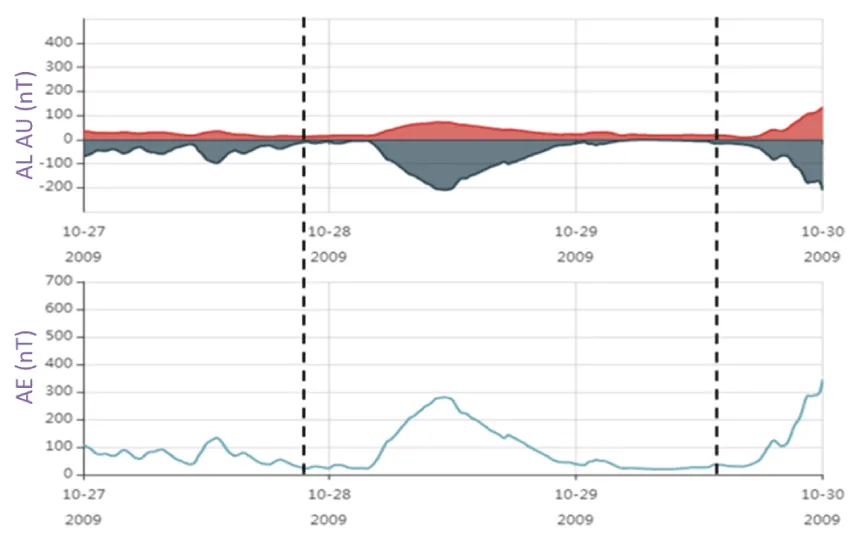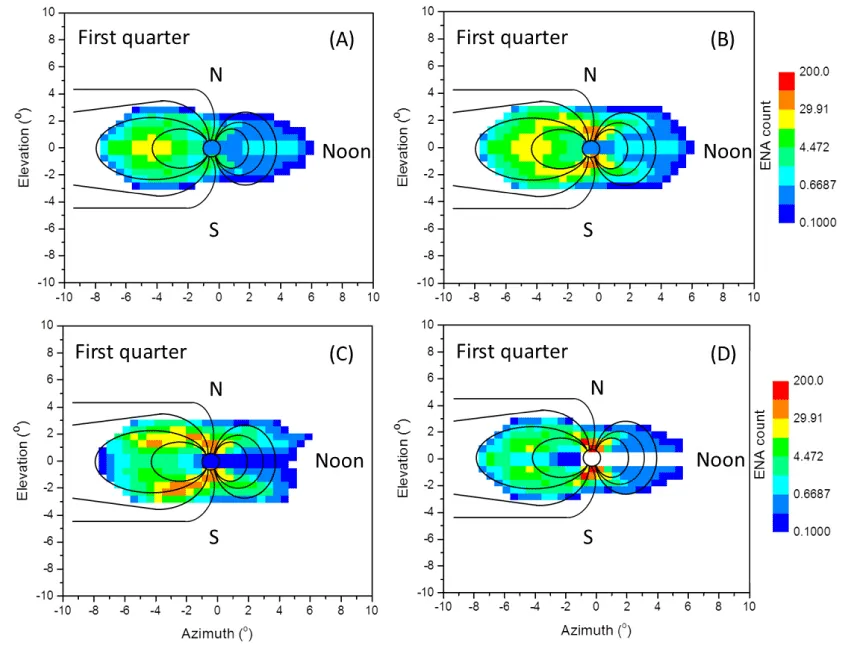Journal of Civil Engineering and Environmental Sciences
Interstellar Boundary Explorer (IBEX) may have recorded a cross-tail current disruption event of the substorm
Lu Li*
Cite this as
Lu L (2023) Interstellar Boundary Explorer (IBEX) may have recorded a cross-tail current disruption event of the substorm. J Civil Eng Environ Sci 9(2): 065-067. DOI: 10.17352/2455-488X.000070Copyright License
© 2023 Lu L. This is an open-access article distributed under the terms of the Creative Commons Attribution License, which permits unrestricted use, distribution, and reproduction in any medium, provided the original author and source are credited.The spatial and temporal variations of satellite measurements correspond to different physical connotations. ENA imaging is an effective method to avoid the confusion of spatial and temporal variations of plasma space distribution in remote sensing region. However, for the neutral atom imager with scanning sampling, if the sampling time is too long (such as exceeding the evolution period of related physical events), it is still necessary to carefully analyze the time change factors of the space environment during the sampling period. Our re-certification of ENA scanning images of the IBEX-Hi’s “terrestrial plasma sheet disconnection” revealed that a magnetospheric substorm occurred during sampling, most likely due to the pitch angle diffusion of energetic ions in the ring current to create the so-called “plasma sheet disconnection” illusion. The observation of ENA imaging reflects the motion pattern of its parent ions, which have a certain distance from space plasma visualization. The dynamic evolution of ring current energetic ion diffusion has inspired us to create a new macroscopic model of substorms that can be visually monitored in the ecliptic plane using ENA imaging.
The American Interstellar Boundary Explorer (IBEX) team published their first ENA image of the terrestrial plasma sheet in 2011 [1]. One of the images shows a possible disconnection event of the plasma sheet (Figure S1) and identifies the red area with high flux on the right of Figure S1 as a plasmoid.
This image has appeared several times in recent ENA exploration project proposals. In fact, it has the worst spatiotemporal resolution of any previous ENA imaging measurements (a spatial resolution of about 6 RE and a temporal resolution of 40 hours). However, it appears near the inner boundary of the plasma sheet at a distance of -10 RE of the magnetotail, providing imagination space for the visualization of space plasma. As a symbol of space plasma visualization, it has substantially affected the positioning of scientific objectives, making many ENA imaging proposals aim at the distant magnetotail lobe reconnection.
However, neutral atom imaging measurements are remote sensing of parent energetic ions via ENA tracer particles. The ring current ion flux and plasma sheet ion density distributed in the magnetotail corresponds to different ion motion patterns and the ENA tracking particles produced by them also have different propagation characteristics. Is the above ENA image a disconnection event of the plasma sheet or a current disruption of the substorm? We need to verify whether the ENA image records spatial or temporal changes during IBEX-Hi scanning.
The raw data in the same literature (Figure S2) indicate that the so-called plasmoid signal stopped abruptly in the afternoon of the 29th. The ENA flux recorded before and after the valley value of the measured data on the 28th is of the same magnitude, which should belong to the same generation mechanism. After the 29th, IBEX-Hi continued to aim at the plasma sheet, but the measurement results were only equivalent to the background intensity. It was not until November 2 that IBEX-Hi entered the plasma sheet to obtain measurements of a full field of view. This shows that the ENA tracer particles produced by thermally moving ions in the plasma sheet propagate omnidirectional, and the flux decay is inversely proportional to the square of the distance, and soon decays to be indistinguishable from the background.
During the geomagnetic quiet period, the pitch angle of energetic ions in the ring current is mostly 90°. The ENAs they produce propagate only within the equatorial plane, the flux decay is inversely proportional to the distance, and the relative decay is slow so that the flux of such particles can still be telemetered near the orbit of the moon.
On orbit 51 (Figure S3), during the ENA measured by IBEX-Hi from 21:21 UT on 27 October 2009 to 13:40 UT on 29 October 2009 experienced a substorm event (Figure 1). The substorm occurred on 28 October 2009: at 3:45, the AE index (AE= 22 nT) began to increase, reached a maximum at 11:15 (AE=281 nT), and resumed quiet at 23:05 (AE=44 nT) for about a day. During the substorm, the pitch angle of energetic ions in the ring current diffused, resulting in a decrease in the ENA flux propagated in the ecliptic plane, and consequently the observational illusion of the plasma sheet disconnection. Before midnight on the 28th, the geomagnetic activity returned to quiet, and the scanning field of view of IBEX-Hi could still cover the ring current at the far end of the magnetotail, and the ENA flux enhancement signal was measured. That is, the ENA flux with a gap recorded by IBEX-Hi in orbit 51 is generated by the parent energetic ions of the ring current. Therefore, we conclude that IBEX-Hi in orbit 51 recorded a cross-tail current disruption event of the substorm.
Inspired by the measurement result, we created a substorm macro model, this model can use ENA panoramic imaging technology for dynamic monitoring, recently published in MDPI astronomy [2]. We simulate the dynamic evolution of ring current during substorms through the pitch angle diffusion of energetic ions (Figure 2) and propose to establish a lunar base ENA imaging monitoring station with a stable observation field.
Based on the motion characteristics of the ring current energetic ions, we find that the lunar base ENA telemetry counts produced in the equatorial plane and the auroral zone are only one order of magnitude different, and both are within the effective range of the ENA imager. Simulated ENA images characterize the distribution of ion flux in magnetospheric ring current. A statistically significant ENA measurement image with a minimum time resolution of 3 minutes in Figure 2 can be obtained using a lunar base 2-D ENA imager. The simulation of the spatial distribution pattern of magnetospheric ring current by lunar base ENA imaging shows that in addition to aurorae enhancement, another important key node, “cross-tail current disruption and current wedge”, can be visually monitored during substorms. The variation of ring current distribution reflects the evolution of magnetospheric substorms. It will provide an intuitive and reliable basis for the investigation of the formation mechanism of magnetospheric substorms.
In conclusion, ENA imaging telemetry with a global view was originally an effective way to distinguish spatiotemporal variations for spacecraft measurements. However, when the ENA imaging scanning time exceeds the evolution period of the observed event, the same space-time variation confusion can be generated as in situ measurements and is even more misleading. Energetic oxygen ions in the ring current area are often measured in situ by satellites during geomagnetic activity, and their origin and acceleration have been the focus of previous substorm events. The ENA imager with the mass spectrum and energy spectrum functions can remotely sense the location and dynamics of the earliest appearance of energetic oxygen ions during the substorm, so as to obtain the relevant information of the source and acceleration of these oxygen ions.
Funding
This research was supported by the National Key R&D Program of China (Grant No. 2020YFE0202100) and National Mission/National Major Science and Technology Project: CE-7 Relay Satellite Display Neutral Atom Imager (Grant No. E16504 B31 S).
Supplementary materials
The following supporting information can be downloaded at: www.sjdz.org.cn/xxx/s1, Figure S1: IBEX - Hi ENA scanning image measurement of the orbit 51; Figure S2: IBEX-Hi measured raw data; Figure S3: The orbit 51 of IBEX.
- McComas DJ, Dayeh MA, Funsten HO, Fuselier SA, Goldstein J, Jahn JM. First IBEX observations of the terrestrial plasma sheet and a possible disconnection event. J Geophys Res. 2011; 116: A02211, doi:10.1029/2010JA016138.
- Lu L, Yu Q, Jia S, Xie Z, Lan J, Chang Y. Simulation of Dynamic Evolution of Ring Current Ion Flux by a Lunar Base Energetic Neutral Atom (ENA) Imaging. Astronomy. 2023; 2: 153-164. https://doi.org/10.3390/astronomy2030011.
Article Alerts
Subscribe to our articles alerts and stay tuned.
 This work is licensed under a Creative Commons Attribution 4.0 International License.
This work is licensed under a Creative Commons Attribution 4.0 International License.




 Save to Mendeley
Save to Mendeley
